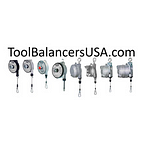Heavy Duty Tool Balancer vs. General Purpose Tool Retractor | Tool Balancers USA
Not surprisingly, the Occupational and Health Safety Administration considers falling tools as being extremely hazardous. When taking the impact of being struck into consideration, it’s easy to recognize how crucial tool balancers are to workshop safety. Not only do tool balancers keep workers safe and reduce operator strain, but they can help with workstation organization.
By choosing the right tool balancer, you can mitigate major causes of accidents in the workplace. For simple hand-operated tools, you can get away with using a general-purpose balancer. However, heavy-duty tools need something more robust to handle their weight, and that’s where heavy-duty tool balancers come in.
It’s important to remember that your goal is ultimately to ensure workshop safety, reduce operator fatigue, and improve the overall ergonomics. When taking that into account, it’s important to find the right tool that fits the job, but where do you start?
Don’t worry. We got you covered.
In this article, we’ll discuss how heavy-duty tool balancers differ from the general-purpose variants and when to use which one.
Heavy-duty Tool Balancers
You have probably heard of simple balancers or the more sophisticated zero gravity tool balancers. The most clear distinction between these two balancers is that they have different designs, including retractor tool balancers. Hence, they serve different purposes.
When we mention a heavy-duty tool balancer, we refer primarily to balancers that can carry larger loads. For instance, you cannot compare the weight of an industrial spot welding machine in an assembly line to simple nail guns. The former is heavier and requires a device with greater load capacity, and therefore needs a bigger balancer.
Typical Components of Heavy-Duty Tool Balancers
We must think about components from the design aspect. For example, zero-gravity tool balancers have a conical cable drum for smoother movement. This differs from a simple spring retractor found in other balancers.
Nonetheless, for most heavy-duty balancers the design stays consistent for the most part:
- Cable: These are often made out of stainless steel and are designed to help bare the load better without snapping.
- Tapered drum: These components are necessary for zero-gravity balancers for smooth cable travel.
- Supporting features: Adjustable capacity, centrifugal safety, and locking devices all help support the overall functionality.
